Anime Backgrounds
 When people think about art in anime, typically character designs and animation dominate the conversation. That's completely understandable. We watch anime for characters we love and to see them in action, so of course that's our focus. But let's not overlook the backgrounds. Anime background art is important: it establishes memorable settings, it enhances the emotion of a scene, and at its best it can be truly breathtaking in its beauty.
When people think about art in anime, typically character designs and animation dominate the conversation. That's completely understandable. We watch anime for characters we love and to see them in action, so of course that's our focus. But let's not overlook the backgrounds. Anime background art is important: it establishes memorable settings, it enhances the emotion of a scene, and at its best it can be truly breathtaking in its beauty.
The following anime backgrounds cover a range of styles, from traditional painting to CGI hybrids, from realism to abstraction, but all in their own way provide some of the most distinctive and stunning visuals around. They also make the best desktop wallpaper ever.
Note: Updated with 30 more screencaps
Howl's Moving Castle




Any Studio Ghibli film would have a fair shot at making this list, and to prevent them from simply dominating this whole list, they're limited to two entries. The first is Hayao Miyazaki's Howl's Moving Castle, the title location of which provides Miyazaki the opportunity for some of the most lived in, colorful, and almost impossibly detailed backgrounds of his legendary filmography.
The Tale of the Princess Kaguya




Of course extreme detail and realistic texture aren't always necessary for creating beautiful anime backgrounds. Sometimes painterly minimalism is what you need. The second Ghibli film on this list, Isao Takahata's The Tale of the Princess Kaguya, takes its cues from traditional Japanese art with its inky watercolors and masterful use of negative space.
Mononoke


Sometimes a good anime background makes you feel like you're on drugs. If that's your style, the TV series Mononoke has you covered. Like Kaguya it pays homage to traditional art styles, but where Kaguya's backgrounds are softer and subdued, Mononoke goes for heavier textures and an insane color scheme.
Puella Magi Madoka Magica




Even in its "normal" settings, Madoka Magica's backgrounds create a sense of eerie forboding in their sharp geometry and intense use of color. Its the insane collage-like Witches' Mazes, however, that give the series some of the most unique and memorable anime background art ever.
Space Dandy
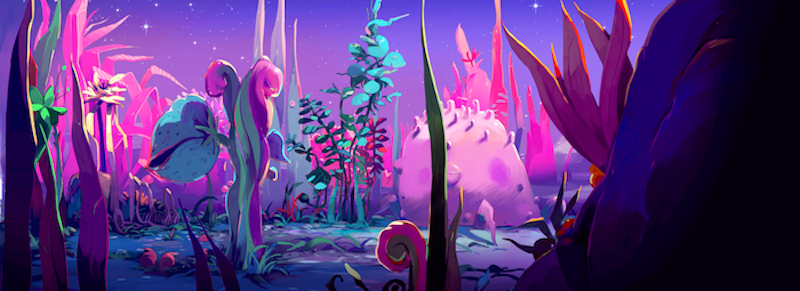



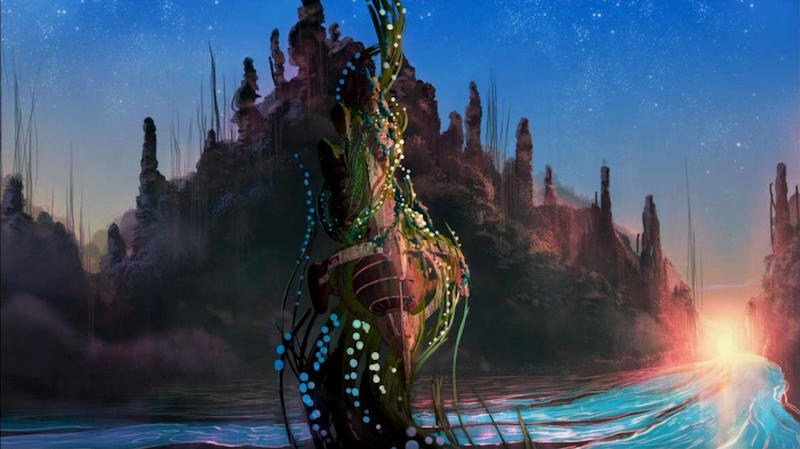


Space Dandy served as an episodic animator's showcase. New planets every week allowed for new and different styles of art and animation. The whole show is wonderful psychedelic eye-candy, but for background art in particular, the plant planet in Season One Episode Nine and the Limbo planet in Season Two Episode Eight stand out as particularly far-out. The last picture is of a wormhole from S1E02 that we thought was especially cool.
Hai to Gensou no Grimgar




Hai to Gensou no Grimgar is really pretty. Its backgrounds look like a watercolor impressionist painting come to life, while the character models follow more standard anime conventions. Definitely an inspired direction A-1 decided to take for one of the Winter 2016 Season's biggest anime.
Tekkon Kinkreet

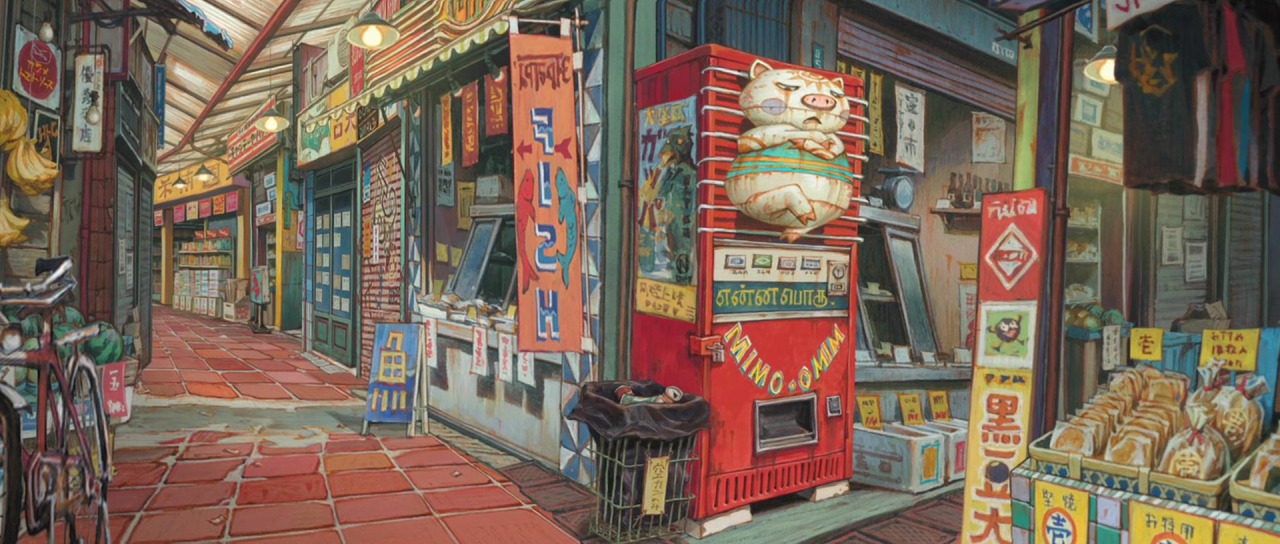


While we're talking about cities in anime, few have been painted with as much vibrant personality as Tekkon Kinkreet's treasure town. The movie sticks close to the rougher visual style of the original manga artist, Taiyo Matsumoto, and the backgrounds of Treasure Town burst with such energy that it's super easy to get on board with the film's "save the town from developers" plotline.
Ghost in the Shell 2: Innocence / Ghost in the Shell


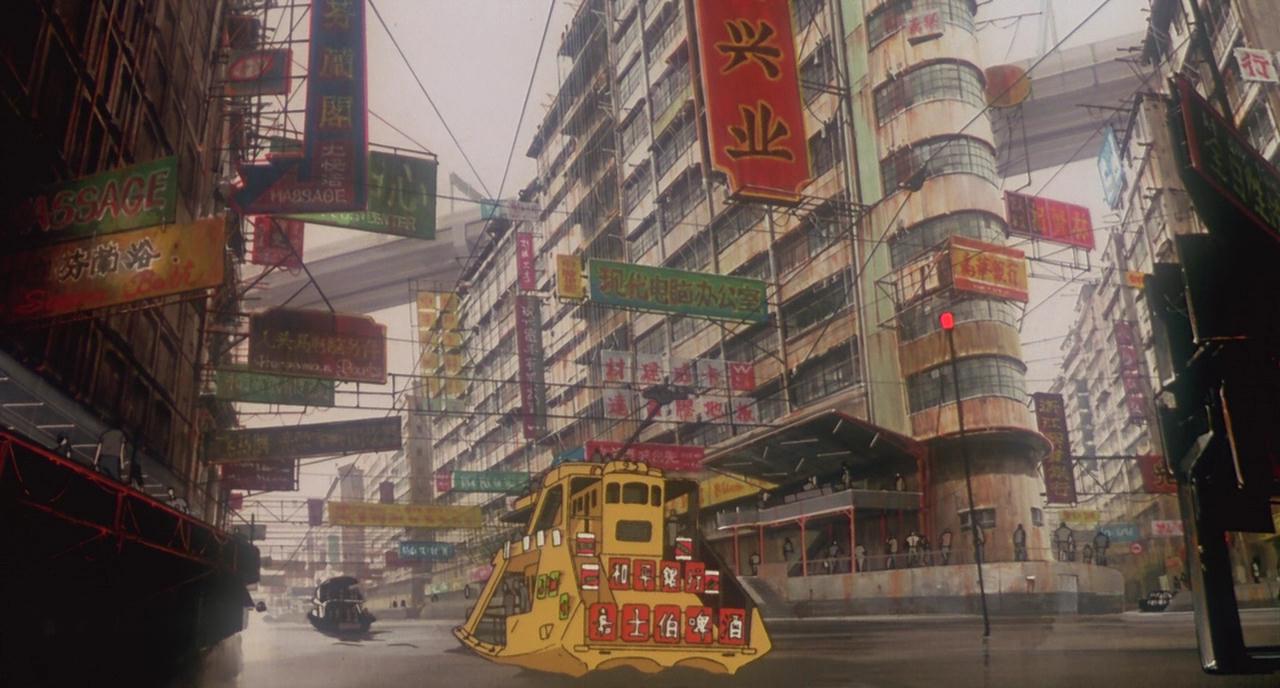
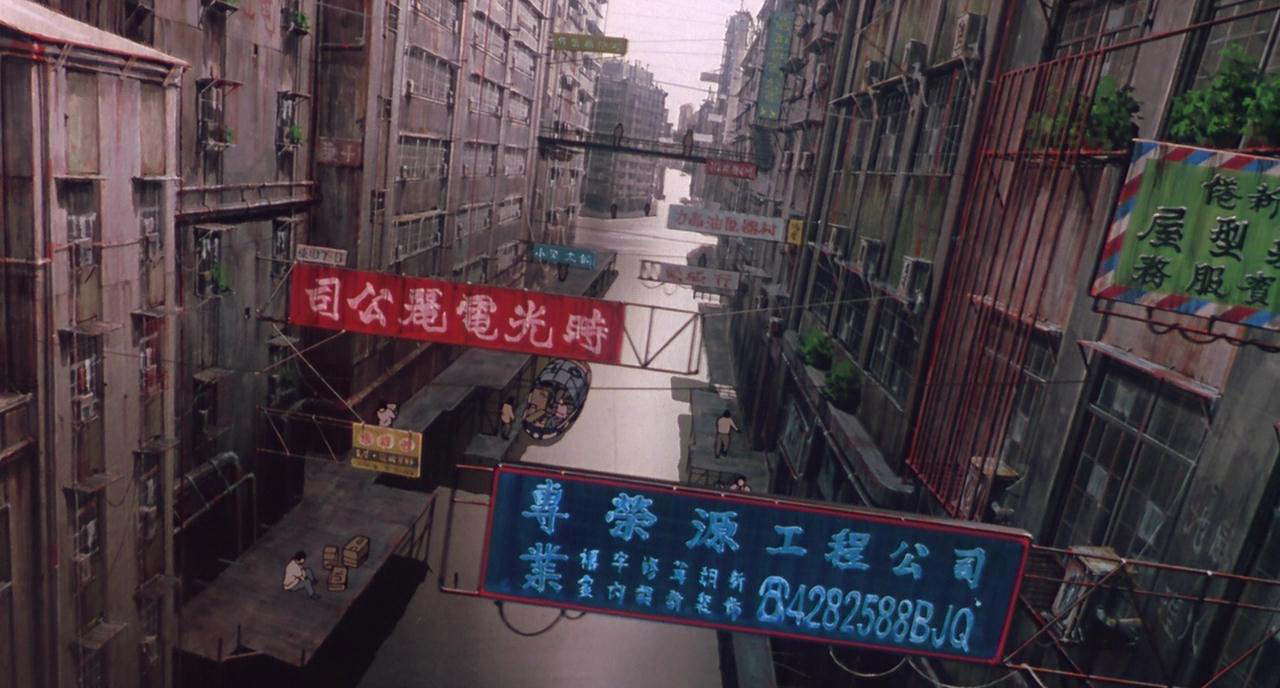
Hot take: Ghost in the Shell 2 is not a good movie. "Pretentious" is a word that's way overused, thrown around at any work with the least bit of intellectual ambition, but when your screenplay is mostly just having your characters awkwardly quote dead philosophers, it's an apt descriptor. That said, there is a reason this mess of a sequel is still worth watching: it's freaking gorgeous, even moreso than the first movie. The background art is simply amazing, particularly in the centerpiece parade scene.
The last two screencaps are from the far superior first movie, included for comparisson.
Nagi no Asukara



A life-affirmingly vibrant real-world fantasy is brought to life in Nagi no Asukara. Blue dominates the spectrum, and despite the crispness of the animation, the art still manages to give off a very dream-like vibe.
The Garden of Words

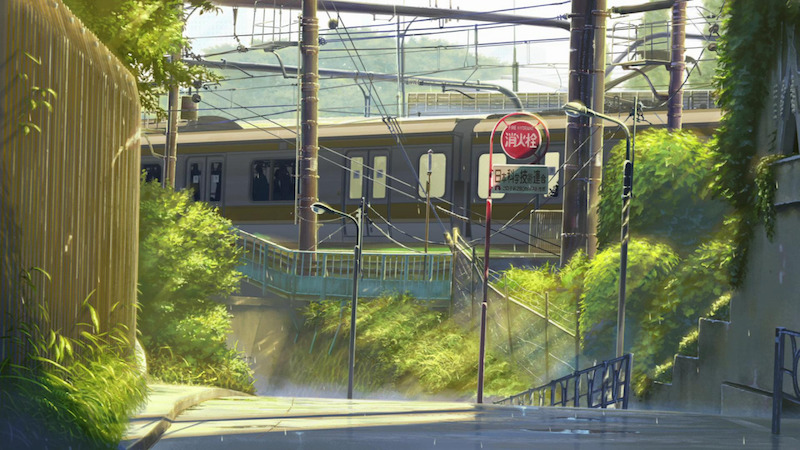



Makoto Shinkai has kept pushing the limits of what he and his small animation team can pull off visually, and Your Name, his latest hit and current highest ranked anime on MAL, might have a shot of making this list if not for his short film, The Garden of Words. If these backgrounds look almost too real, there's a reason for that: Shinkai bases many of his backgrounds on actual photos. His great sense of color makes them fit naturally with the anime designs.
Revolutionary Girl Utena


When it comes to older TV anime, design is often more important than animation in terms of what ages well. Take Utena for instance: the animation itself is nothing special by today's standards, but the exquisite design of both the characters and in particular the backgrounds of Ohtori Academy has helped the show stand the test of time. That dueling arena looks so cool that we don't mind if you recycle the same stair-climbing animation every episode!
Summer Wars


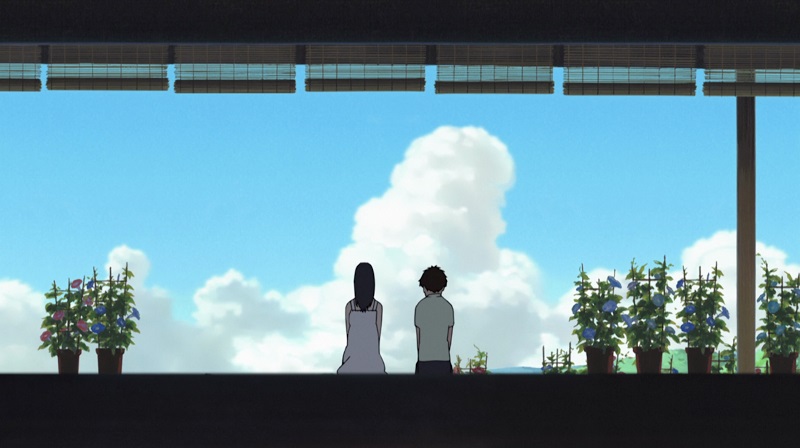
The backgrounds in Summer Wars come in two very different art styles. The real world backgrounds are suitably realistic and hand-painted. The digital world of Oz, on the other hand, is stylized CG designed like the "superflat" pop art of Takeshi Murakami. Both styles work wonderfully in a film that's about embracing both the traditional and the new.
Psycho-Pass




No anime studio does cyberpunk settings as well as Production IG does. In addition to the various Ghost in the Shell movies and series, they also did Psycho-Pass. It might not be as in your face with special effects as some GitS anime, but Psycho-Pass's background art seriously impresses with its Blade Runner-esque neon-drenched dystopia.
Blood Blockade Battlefront

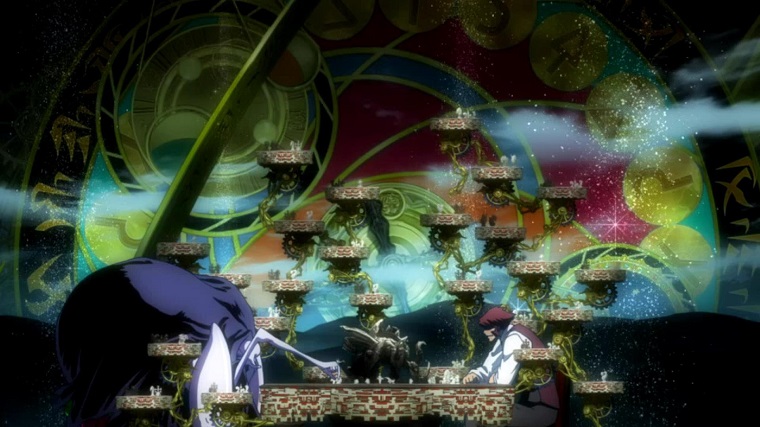
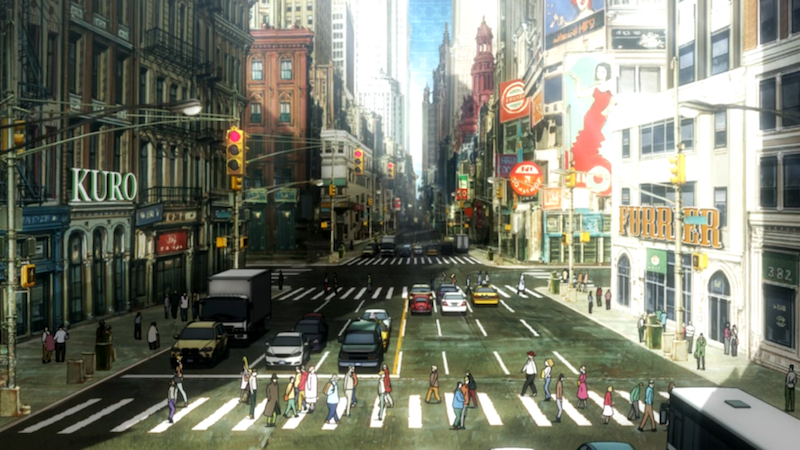

As an American it's always interesting to see how anime series depict the United States, and weirdly satisfying when they get things right. Blood Blockade Battlefront deserves major props for its well-researched portrayal of New York City, and the vibrant, detailed backgrounds do much of the work selling the believability of the setting.
Millenium Actress


Millenium Actress technically tells the story of a single lifetime, but presents that life as an epic spanning from the Sengoku period to the future of space travel. The background artists had their work cut out for them bringing all these settings to life, but all of them are beautifully portrayed, grounded with a subdued realism that contrasts with just how surreal Satoshi Kon's storytelling is.
Metropolis
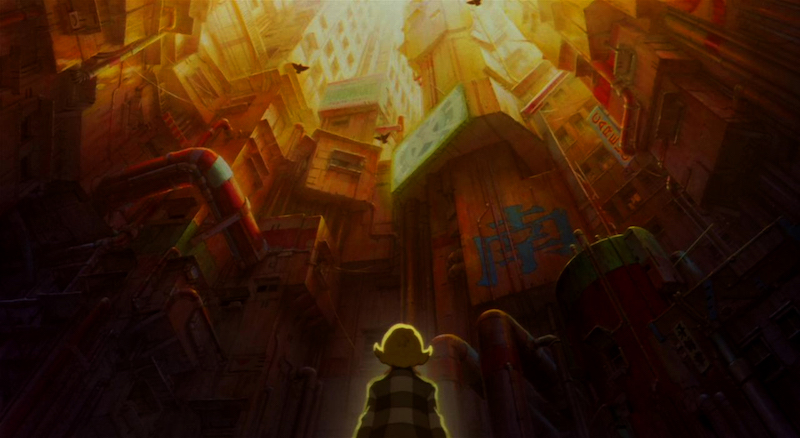
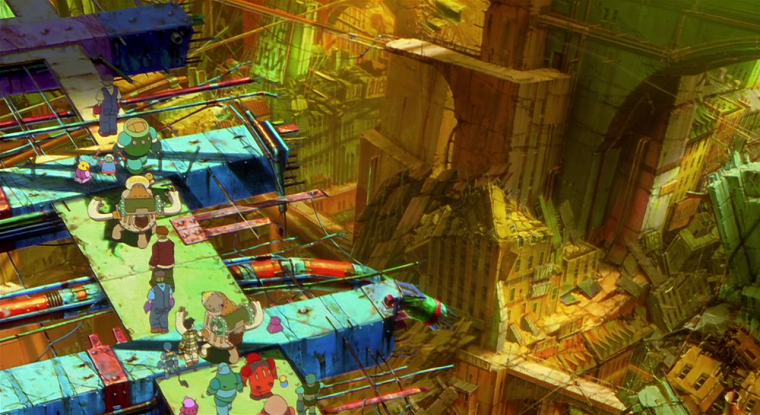
Inspired by the German Expressionist visuals of Fritz Lang's 1927 sci-fi classic Metropolis (though surprisingly not having much in common in terms of plot), Rintaro's anime feature paints a vibrant picture of a retro-futuristic city. Its imposing skyscrapers and colorful but decaying slums were created through a mix of computer graphics and traditionally hand-painted backgrounds.
Akira


Of course we wouldn't finish this list without Akira. Katsuhiro Otomo's film is still one of the most visually stunning animated movies ever made to this day, and its background art deserves all the praise it's recieved. Neo-Tokyo exploded off the screen with dark atmosphere and astonishing hand-painted detail, brought to vivid life by some excellent multi-plane cinematography. Just look at those backgrounds. Someone painted every single window in all those skyscrapers!




